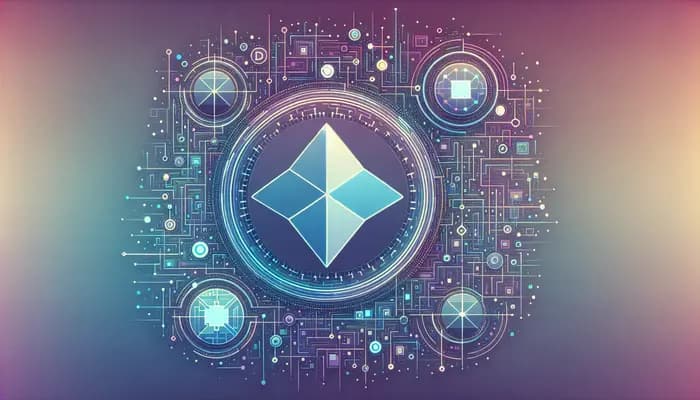DAO Governance: Evolution and Best Practices for Modern Crypto Communities

The rapid ascent of Decentralized Autonomous Organizations (DAOs) has fundamentally transformed the way communities coordinate, invest, and innovate across the crypto landscape. Once seen as radical experiments in decentralization, DAOs now underpin vital sectors—from DeFi protocols to creator economies and global supply chains. But as DAOs proliferate, the complexity and stakes of governance have grown, demanding new models and best practices that balance decentralization with efficiency, security, and sustainability.
The Evolution of DAO Governance: From Experimentation to Maturity
DAO governance started as an ideological push for maximum decentralization—every token holder could vote on every decision, and smart contracts executed outcomes on-chain with full transparency. However, early models often struggled with low participation, voter apathy, and susceptibility to governance attacks or manipulation. These challenges revealed that pure decentralization is not a panacea; resilient DAOs must evolve and adapt[4][1].
By 2025, DAO governance has entered a new phase marked by pragmatism and learning from past pitfalls. Modern DAOs blend community-driven principles with structured processes. The rise of hybrid governance models—incorporating elements such as delegated voting, multi-signature approvals, and specialized working groups (SubDAOs)—has made decision-making more robust and scalable. This nuanced approach ensures that while decentralization remains core, it does not come at the expense of operational efficiency or long-term sustainability[4][2].
Key DAO Governance Models and Voting Mechanisms
The diversity of DAO governance structures reflects the unique needs and goals of each community. Here are the most prominent models gaining traction:
- Token-Weighted Voting: Members vote in proportion to their governance token holdings. While straightforward, this model risks concentration of power among whales[1].
- Quadratic Voting: Weights votes in a way that reduces the influence of large holders, encouraging broader participation and nuanced expression of preferences[1].
- Reputation-Based Governance: Voting power is based on members' contributions and activity, not just token ownership, promoting meritocracy[1].
- Liquid Democracy: Members can delegate their voting power to trusted experts or representatives, combining direct participation with informed decision-making. This model helps prevent voter fatigue and increases the quality of governance outcomes[2][4].
- Multi-Signature and Hybrid Models: Combining on-chain voting with off-chain deliberation or requiring multiple signatories for critical actions enhances security and checks and balances[1][4].
Emerging Best Practices: Building Resilient, Inclusive, and Scalable DAOs
DAOs have embraced several best practices as they mature:
1. Modular and Scalable Governance
- The use of SubDAOs—independent working groups focused on specific domains (e.g., grants, compliance, protocol upgrades)—enables specialization, fosters accountability, and allows DAOs to grow without centralizing power[4][5].
- Modular governance frameworks make it possible to evolve rules and structures incrementally, supporting long-term adaptability[5].
2. Delegated and Hybrid Voting
- Allowing delegation of voting rights reduces participation fatigue and ensures that decisions are made by engaged, informed actors. Delegated voting—and liquid democracy models—help strike a balance between inclusivity and expertise, especially as DAOs scale to thousands of members[2][4].
3. Transparency and On-Chain Execution
- Every proposal, vote, and treasury action is recorded on-chain, fostering trust and accountability. Transparent on-chain processes are crucial for attracting and retaining community support and for effective risk management[1][4].
4. Incentivizing Participation and Meritocracy
- DAOs are experimenting with reputation systems, contributor rewards, and gamified incentives to increase engagement and recognize valuable input beyond simple token holdings[1][5].
5. Legal and Regulatory Adaptation
- As DAOs intersect with traditional systems, robust legal frameworks and compliance processes are becoming standard. Jurisdiction-neutral structures and legal wrappers reduce risk and legitimize DAO operations for external stakeholders[3][4].
Common Pitfalls and How to Avoid Them
While DAO governance has matured, several challenges persist:
- Voter Apathy and Low Engagement: Overly complex or frequent voting can exhaust members. Solutions include delegation, off-chain signaling before on-chain execution, and focusing on high-impact proposals[4][2].
- Centralization Risks: Token-weighted models can concentrate control. Quadratic voting, reputation-based systems, and SubDAOs help distribute influence.[1]
- Lack of Accountability: Without clear reporting and oversight, DAOs risk inefficiency or misuse of resources. Modular structures, transparent reporting, and regular audits are critical[4][5].
DAO Governance in 2025: Looking Forward
DAOs will continue to drive innovation in decentralized governance, with trends pointing toward:
- Integration of AI and automation for proposal curation, risk analysis, and dispute resolution[5].
- Enhanced privacy tools to enable confidential voting and protect sensitive data.
- Greater synergy between on-chain governance and real-world legal systems, increasing mainstream adoption and resilience[3].
The future of DAO governance lies in adaptive, modular, and community-centric models—balancing transparency, accountability, and efficiency while empowering diverse stakeholders.
Ready to assess the health and risk of your favorite DAO or token project? Explore TokenVitals for cutting-edge analytics on governance, tokenomics, and on-chain activity—helping you invest and participate in crypto communities with confidence.